Terry Doe reviews the Reximex Pretensis - an adjustable, ambidextrous, multi-shot PCP air rifle with sight-mounting system for less than £550!
Depending on where you shop, the Turkish-made Reximex Pretensis rifle you’re looking at on these pages will cost you between £500 and £550. For that, you’ll get a multi-shot, variable-power, pre-charged pneumatic, sidelever rifle, with an adjustable, ambidextrous, synthetic stock, an adjustable trigger, the best of all sight-mounting systems, and a level of downrange performance that will make you grin like only truly happy shooters grin.
You’ll also get two magazines, the required charging probe, a single-shot loading tray, a section of add-on accessory rail, a selection of hex wrenches and ‘O’-ring seals, a cleaning cloth, an instruction booklet, a couple of targets, and a branded baseball cap. That’s quite a package, and for me, as one who wants as many people as possible to be offered an affordable route into our beloved sport, the Reximex Pretensis package is pleasing way beyond its individual worth.
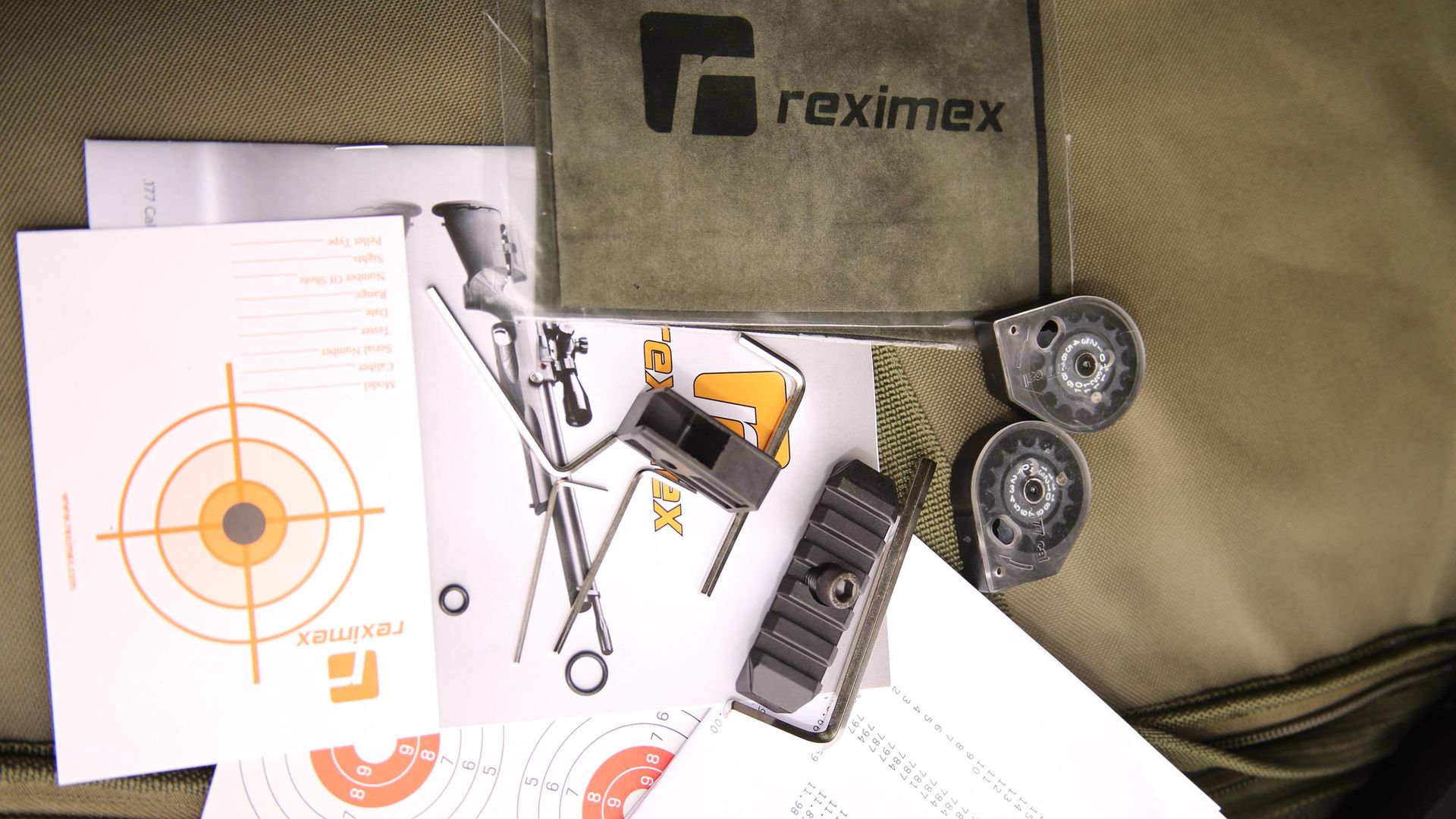 credit: Archant
credit: Archant
High performance for all airgunners
This rifle embodies a new age of airgun potential, where genuine high performance is available to more people than ever before, and I believe this has to be good for us and our future. The superguns are still available, of course, and they will always offer their own level of accomplishment and pleasure of use, but for those who want well built, properly designed, straight-shooting airguns at more affordable prices, this new age offers access to the pure joy of successful shooting like never before. Right, that’s enough of the airgun evangelism – let’s see what Reximex has come up with in the Pretensis.
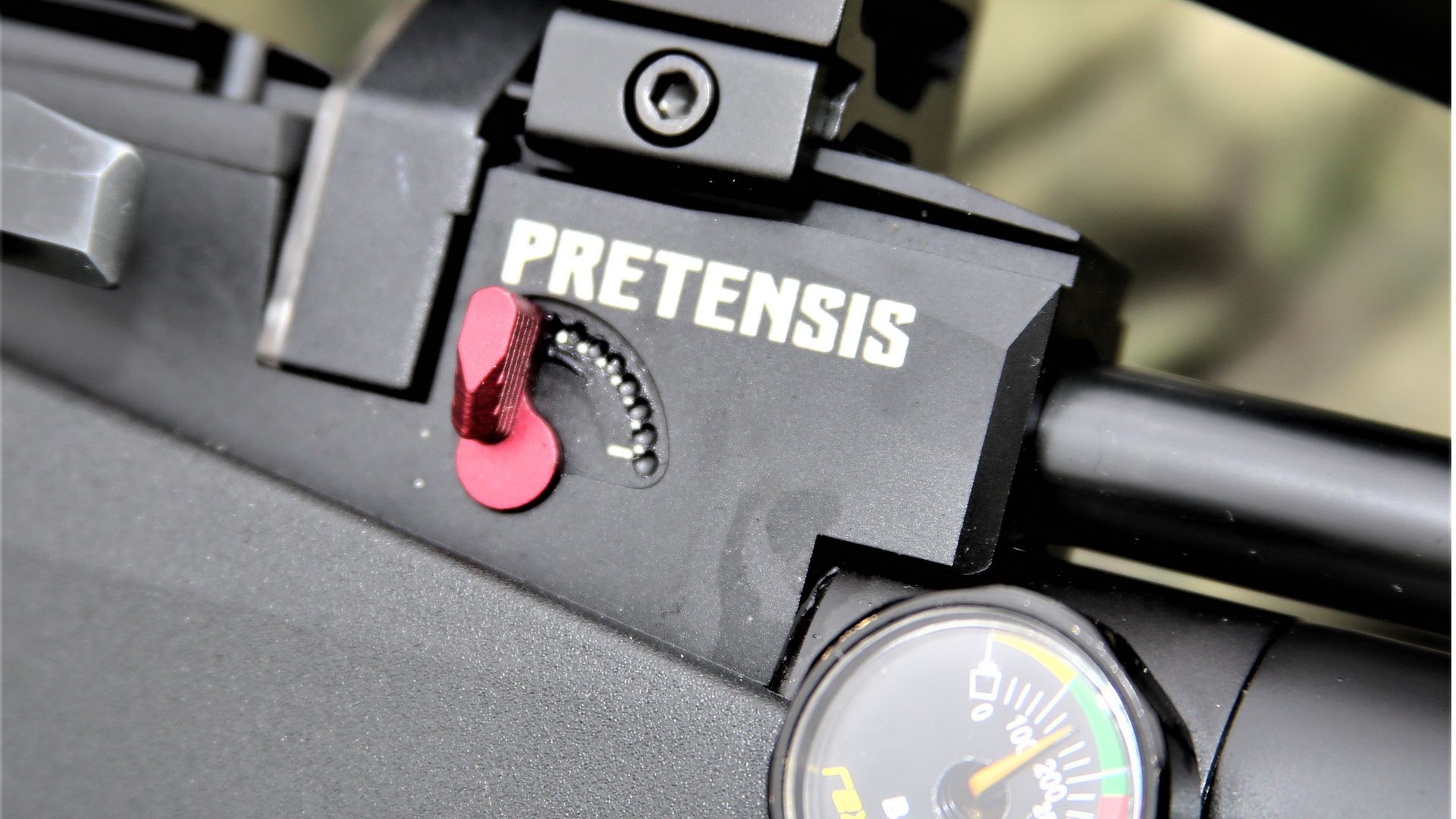 credit: Archant
credit: Archant
The Reximex Pretensis overview
At 33.5 inches and 6lbs, unscoped, the Pretensis is a full-length rifle in the light-to-middleweight category. It’s unregulated, and its 260cc air reservoir is protected by a ‘blow-out seal’, which is designed to vent air should the safe working limit be exceeded.
The trigger mechanism can be adjusted – after removing the stock – and the correct hex-wrench is supplied. The trigger blade is a shiftable shoe, and its correct placement certainly makes best use of the mechanism.
Adjustable power is always a non-essential feature in a sub-12 rifle, but it can be handy in certain situations. The Pretensis’ version is an 8-option design, actioned by a little red lever, with firm ‘stops’ at each setting, and offers muzzle energies from 11.4 down to 5.7. I’ve previously used these power-adjust systems to clear feral pigeons in places where even 11-plus ft.lbs. is too much gun, and also to provide more shots when coaching new shooters.
At FAC levels, this feature is far more useful, offering the ability to tailor the rifle’s output from 30, down to 12 ft.lbs, in .22 calibre. I don’t yet have access to the FAC output of the Pretensis, but those numbers correspond with other systems I’ve used, and in my experience they add up to an extremely useable FAC rifle.
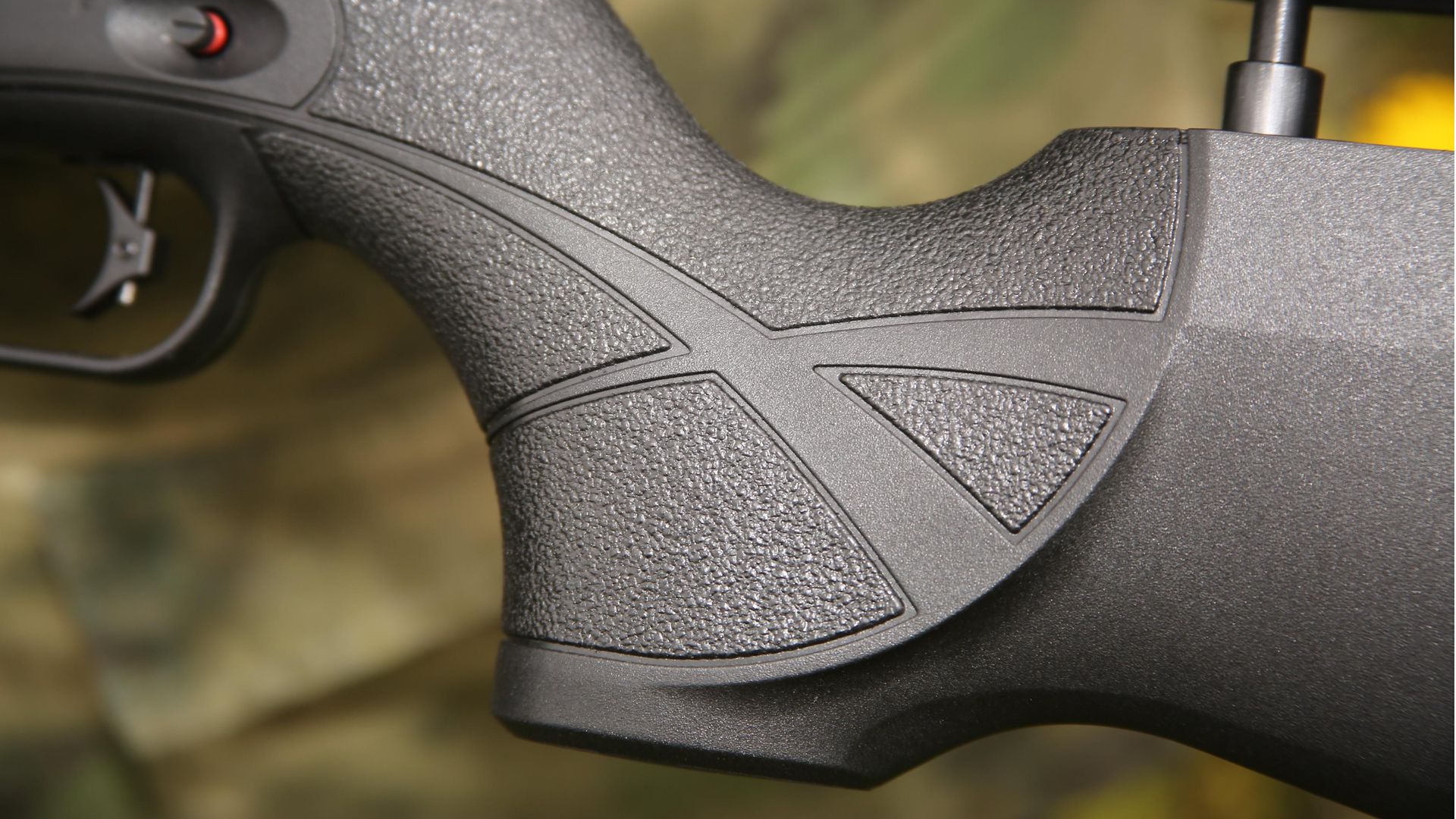 credit: Archant
credit: Archant
Reximex Pretensis - stock and scope mounting
Anyone who has endured my reviews for the past few years will know that my main hobby-horse has been the importance of gun fit.
To reiterate; I believe that the advantage of a correctly fitted rifle represents the single biggest step toward shooting success. The rifles are now so much better than we are, it’s time we did everything in our power to catch up with them, and guiding our efforts with stocks that fit us is the foundation of that effort.
The Pretensis has an ambidextrous stock, which offers a variable-height cheek piece and a sliding butt pad. Both are actioned at the press of a fat button, and once adjusted, they lock firmly into the chosen setting. It’s a simple, solid, and totally effective system, and to find such a huge advantage on such an affordable rifle speaks volumes about this new age I mentioned earlier.
I am always happy to see a sight mounting rail that offers the standard 11mm dovetail, alongside the increasingly popular 22mm Picatinny design. The Pretensis has this dual-option rail as standard, and I wish more manufacturers would adopt it, especially on recoilless rifles where the undeniable solidity of the Picatinny/Weaver system isn’t really required.
On the test rifle, the 50mm diameter of the supplied scope’s objective lens was easily accommodated with a set of ‘medium’ mounts, and even ‘low’ mounts may have been viable, due to the rifle’s 19-inch barrel being set 8mm below the rail’s clamping dovetails. Had I chosen the 11mm option at the very top of the rail, there would be even more clearance, but either way, there was plenty of room for the magazine or single-shot loader to slide in and out, without fouling the scope body. This is as near to the perfect sight mounting deal as I’ve encountered, and underlines, yet again, the thought that has gone into this rifle.
 credit: Archant
credit: Archant
Reximex Pretensis - magazine, fit and finish
Many of you will have seen, and possibly used, the type of pellet magazine supplied with the Reximex Pretensis. It follows the, ‘rotate the clear cover to tension the inner drive-spring, then insert a pellet to lock the mechanism, before loading the remaining chambers’ design, and it’s none the worse for that. In the test rifle’s .177 calibre, the magazine houses 14 pellets (12 in .22), and, with the sidelever fully drawn back, is inserted, ‘rounded end first’, from the right-hand side of the action, with the clear cover facing the shooter, guided into position by its moulded rail, until it reaches a defined ‘stop’.
When the final pellet has been cycled from the mag’ the sidelever can’t be closed, providing the perfect prompt to swap the empty magazine for a loaded one. Combined with the visual info from the clear cover, monitoring your pellet reserves should never be a problem. Remember, the magazine can’t be inserted in any way other than the correct one, and it snaps home to let you know that it’s where it should be. Plus, it shows you how many pellets you have left, and it leaves you in no doubt that the mag’ is empty. You also get two of them, plus that single-shot tray. This is a fully-sorted auto-load system, be in no doubt of that.
There’s no miles-deep bluing to admire on the Reximex Pretensis. Instead, the metalwork is finished in an even, and consistently applied, semi-matte protective coating, against which the rifle’s white lettering, logo, and that little red power-adjuster contrast markedly. Only time will tell how that finish holds up, but so far the supplied cleaning cloth and a couple of drops of oil have kept everything as new. That said, I’m trying my very best to keep the test rifle in pristine condition, because, we’ll be offering it as a prize, complete with the scope shown here, just as soon as we can come up with a competition format that works. Keep your eyes peeled for that one, then.
Meanwhile, close scrutiny of the rifle’s features reveals a complete absence of machining marks, burrs, and no evidence whatsoever of any ‘built down to a price’ production regimen. In fact, one significant feature shouts loudly of commendable attention to detail.
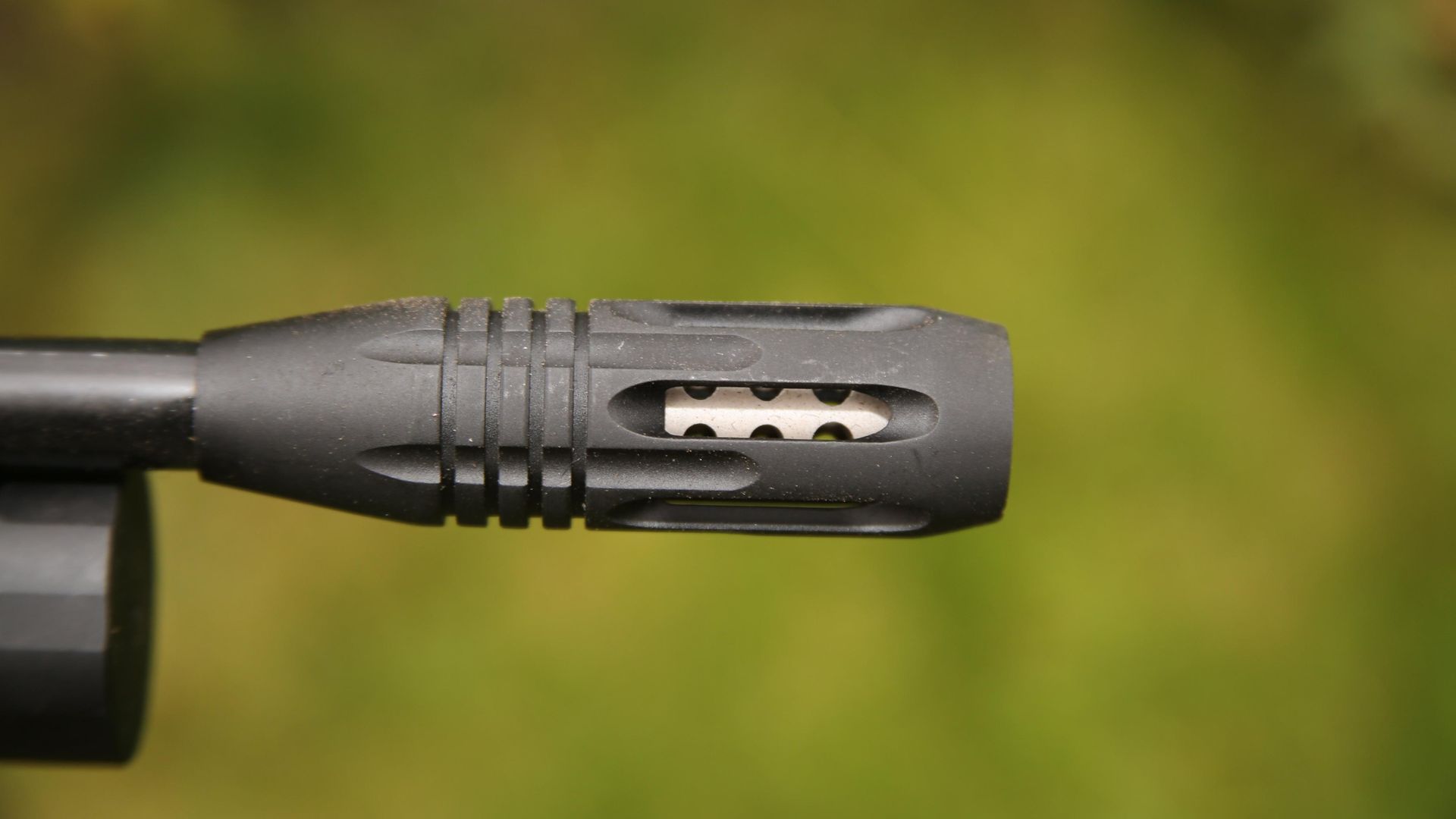 credit: Archant
credit: Archant
Reximex Pretensis - barrel, charging and shot capacity
The barrel of the Pretensis comes ready threaded for a silencer, and if you’re going to use this rifle for hunting, you’ll need one. Until you get one, the supplied muzzle brake, with its ports, vents flutes and cutaways, would look perfectly at home on the highest of tech field-target rifles. It’s a genuinely impressive piece of hardware that must have demanded considerable design and production input from the technical staff at Reximex.
With upward of 20 integrated CNC production machines housed within its 12,000 square-metre facility, the 50-strong staff at Reximex headquarters in Turkey certainly has the capability to produce anything that fits its mission statement. ‘Our founding purpose is to produce world-class products using the latest R&D and manufacturing technology, with the guidance of our management and production team which has over 25 years’ experience in the arms manufacturing business.’
That said, and at the risk of being a bit of a technology party pooper, I’d have much preferred Reximex to have channelled its proven capabilities into a silencer, rather than that impressive muzzle brake. As it was, I fitted a small moderator with an active baffle system – baffles on springs to absorb muzzle blast – and the difference was significant. The brake did quieten things down a bit, but as stated, you’ll need a moderator if you want to go hunting with a Pretensis.
The supplied charging probe slides into its inlet port beneath the removable dust cover beneath the muzzle, and makes charging to the recommended 200 bar a matter of a minute or so, if you take your time and let the pressure build gradually, as you should always do. From that level of charge, the test .177 rifle gave 130-plus shots at 11.4 ft.lbs., and I’m assured a .22 example would produce more than 150. The 200 bar charge is, as always, negotiable. This is a non-regulated rifle, so what we’re looking for is to capture the best arc of the power-discharge curve, so if you want the absolute best from this rifle, or any using a similar knock-open valve design, you’ll need to endure the tedium of chronograph testing until you find that sweet spot. It’s an entirely worthwhile exercise, and well worth the bother.
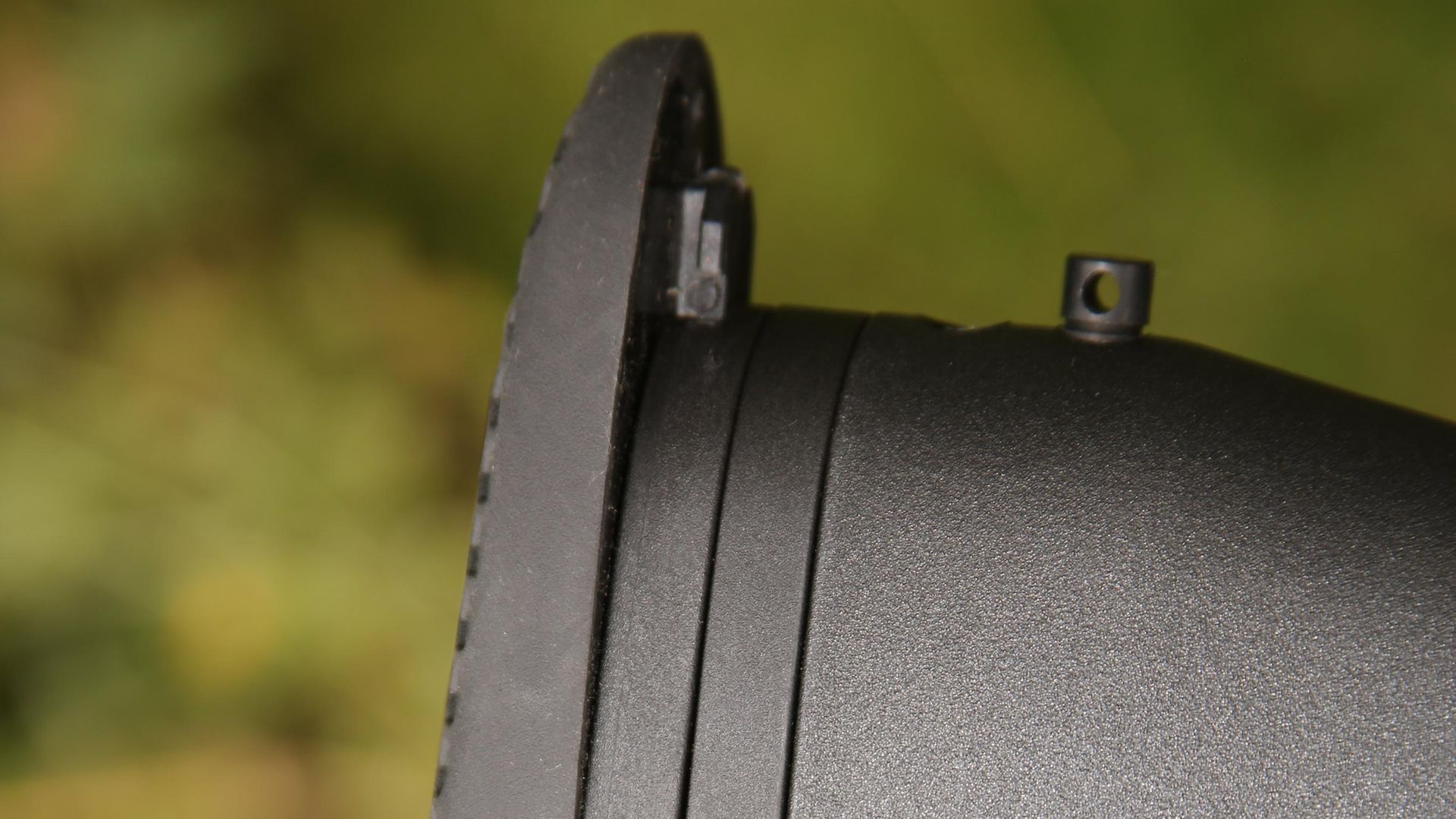
Reximex Pretensis - performance and verdict
The velocity/consistency readout ticket supplied by Range Right looked, frankly, too good to be true, so the first thing I did was to compare notes. They compared perfectly, and my figures were actually slightly better, probably because I used weighed and sorted pellets. Over the first 50 shots I tested, the Pretensis recorded an average variation of just 12 fps, and in practical terms, that’s no variation at all. On a 30-yard target, from a rested stance in completely still air, I immediately put together a series of groups on the supplied target that had me saying ‘blimey’, and similar words of approval. A couple of authentic single-holers were the stars of the show, and only my unprofessional keenness to start shooting before tweaking the trigger toward a more precise let-off spoiled a remarkable debut, when the target was moved back to 40 yards. Later exploration of the rifle’s full performance potential proved beyond doubt that the Pretensis is more than capable of serving as a precision hunting rifle.
Let’s get something straight, here; the Pretensis won’t give you the silky-smooth, ‘glide-about-its-business’ level of handling and componentry returned by the rifles at the very top of our sporting food chain. There’s more purpose and robust practicality than poise about the way the Pretensis operates, so don’t expect a £1000 rifle for half the cost. Life doesn’t work like that; it never has, and it never will. Instead, expect to be favourably impressed – I’m understating, here – with what you really do get for your money.
The Reximex Pretensis represents incredible value for money, especially when it comes to performance, and its build quality appears to have everything needed to keep that performance coming for years. There’s plenty more to explore about this rifle, not least its stability on aim, the quality of its trigger after adjustment, and any pellet preferences it may have, and I’ll report further on that next month. As it stands, the Pretensis is a worthy flagship for the new age of airgunning – where being affordable doesn’t mean compromising on performance.
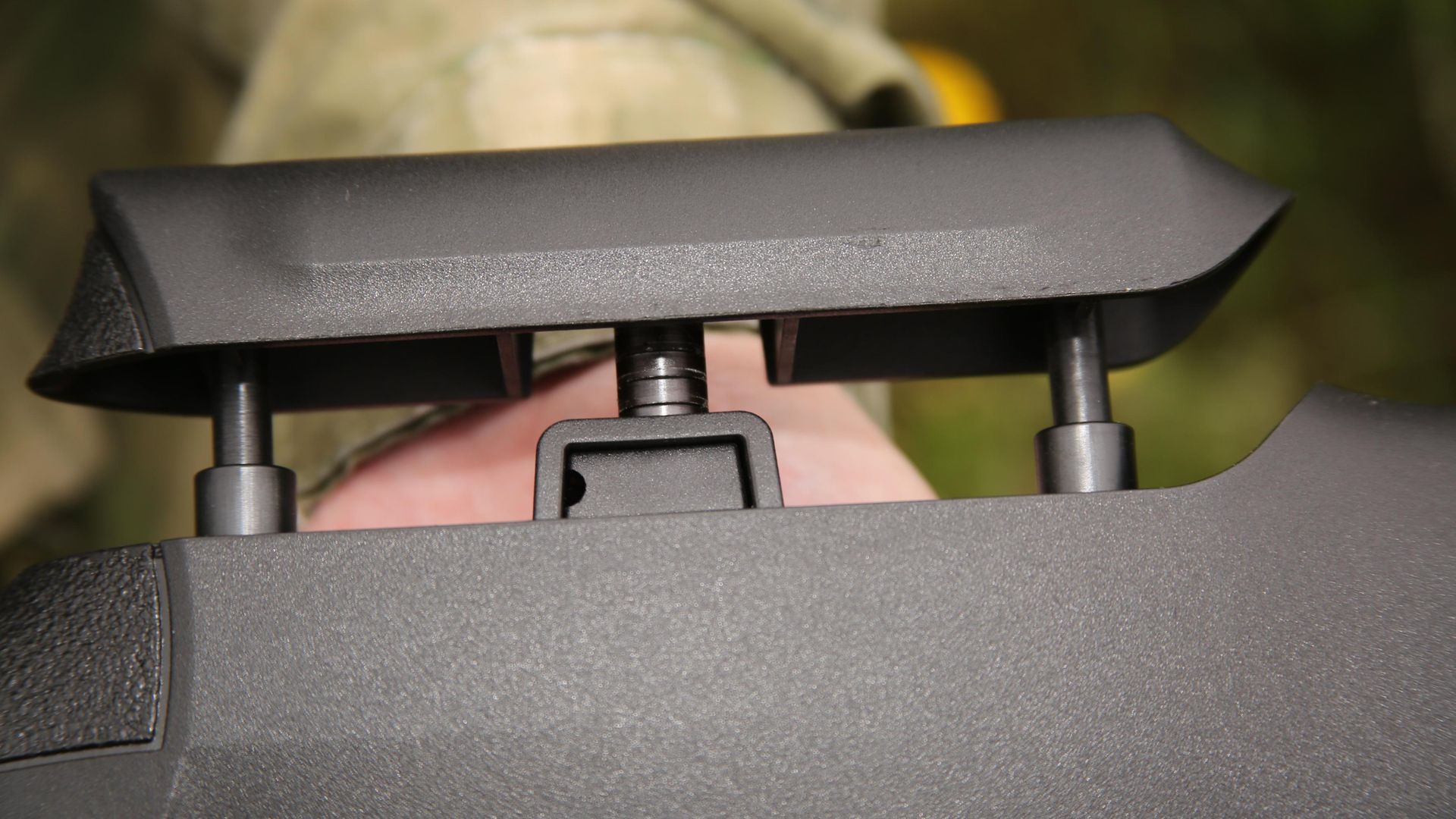 credit: Archant
credit: Archant
Tech specs
Model: Pretensis
Manufacturer: Reximex
Country of origin: Turkey
Price: £550
Type: Pre-charged pneumatic, multi-shot, sporter
Calibre: .22, .177
Cocking/loading: Side-lever
Trigger: 2-stage, adjustable, with manual, resettable safety
Stock type: Ambidextrous, synthetic, adjustable
Weight: 2.8kg (6.2lbs) rifle only
Length: 1050mm (35.4”)
Barrel: 580mm (19ins)
Filling Pressure: 250bar (3625psi) Max, but 200 bar recommended.
Magazine capacity: 14 for .177, 12 for .22
Shots per charge: 120 in .177 and 150 in .22, at11-plus ft.lbs.
Average energy: 11.4 ft.lbs.
Contact: Range Right